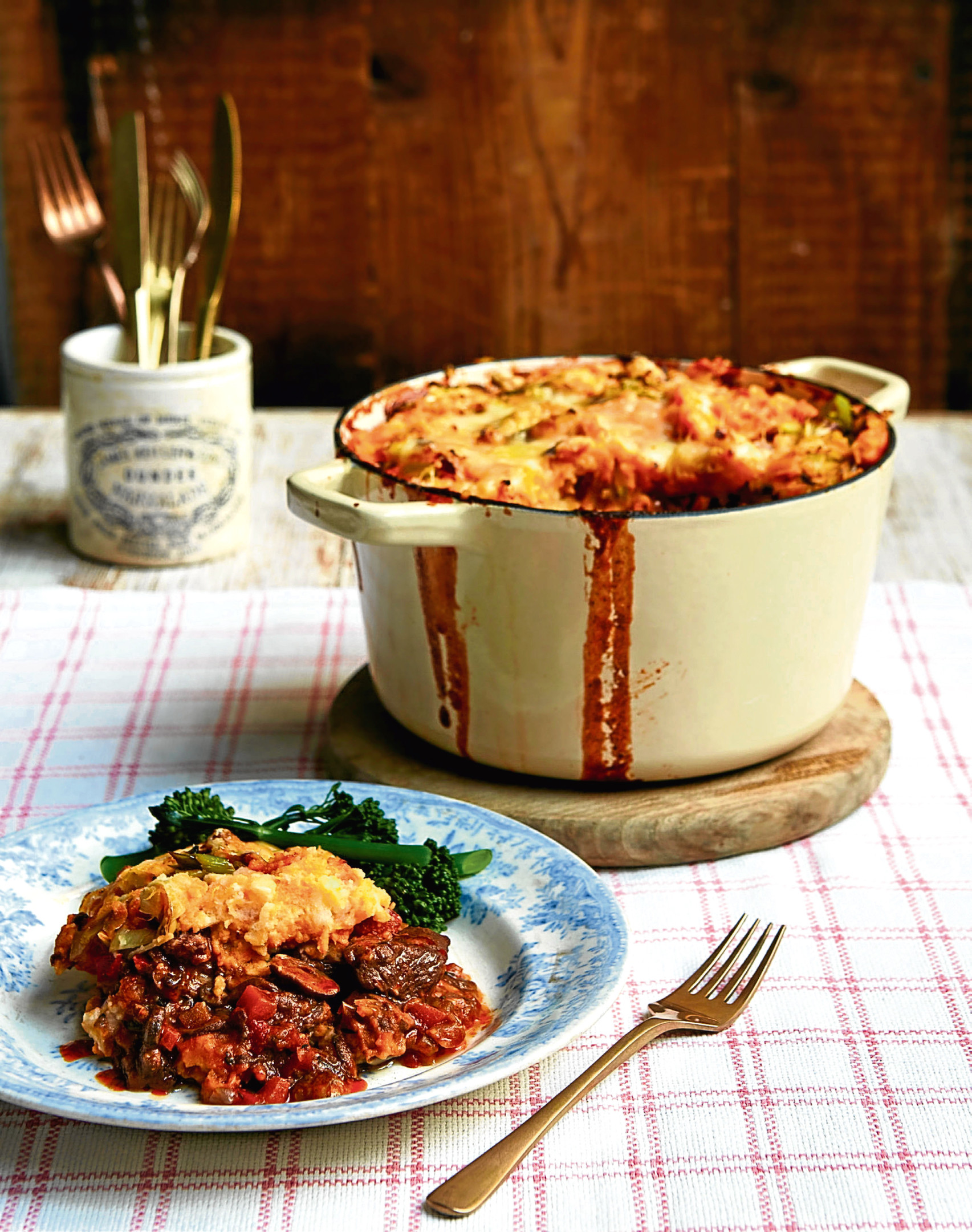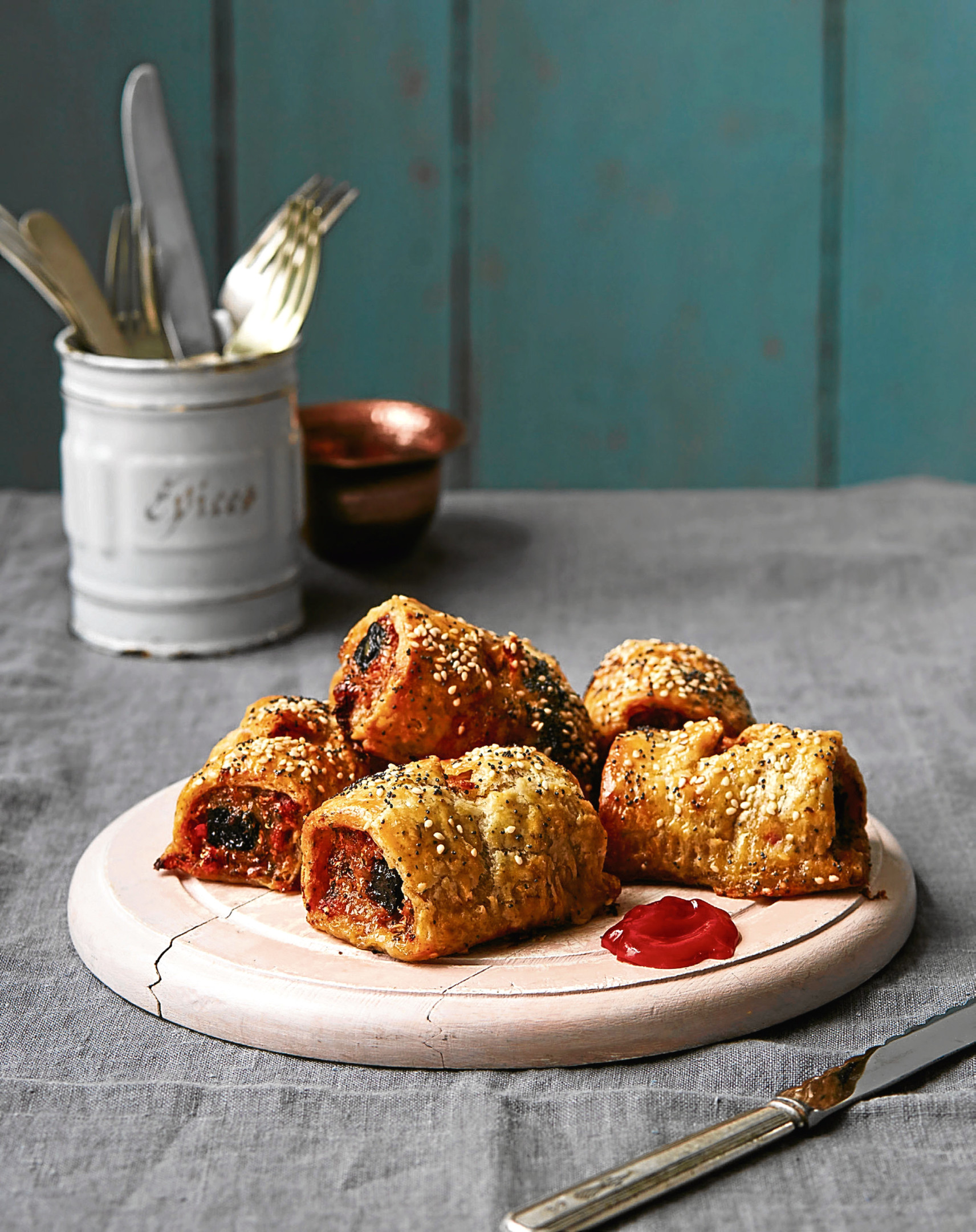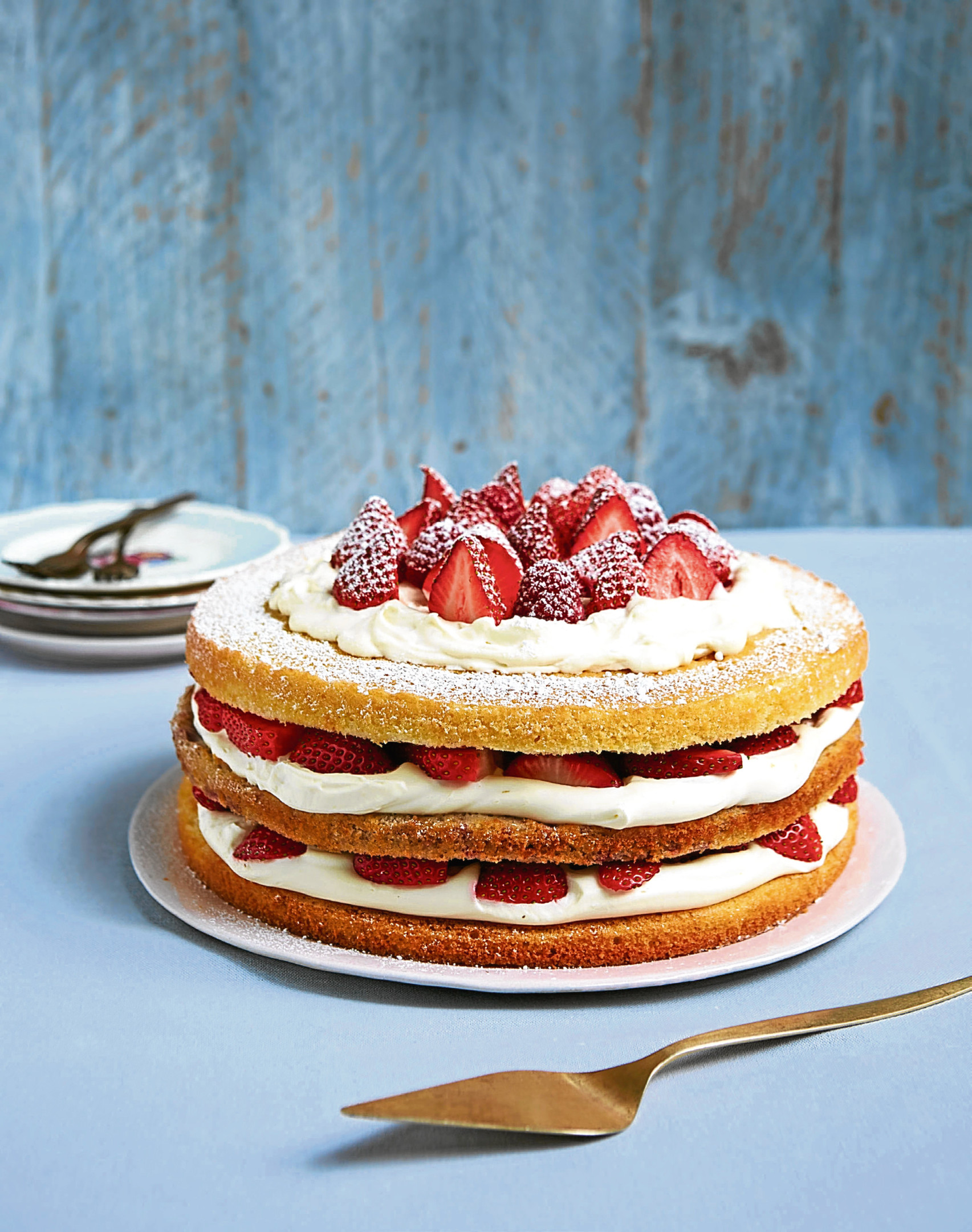Candice Brown won the Great British Bake Off last year, and now has her first book out.
Let’s just say, she’s still trying to get her head around these really quite delicious facts.
“It’s funny saying that… ‘My book!”’ she says, with a small, bemused laugh.
Winning Bake Off, the ultimate show for those who pride themselves on the quality of their lemon drizzle and the sturdiness of their pie crust, would, you’d think, prepare a person for automatic cookbook domination and a tasty TV career. However, 32-year-old former PE teacher Candice is still utterly gobsmacked.
In fact, when she got the call confirming her book deal, she was wandering around Fortnum & Mason, staring at the meat in the butcher’s section – and had to hang up to gaze, stunned, at the carcases for a while longer, while the news sunk in.
Three manic months of writing, cooking, developing (and very little sleep) later, and the result is Comfort, a collection of Candice’s tried-and-tested home classics: “The sort of things you want to stick your face in, grab a spoon, dive straight in and worry about burning your mouth later.”
Squidged between snaps of her pug Dennis, the recipes are huge, decadent and sometimes borrowed treats – think an enormous, bubbling shepherd’s pie, sausage rolls the size of bricks, and her beloved nan’s boiled fruit cake. “Everything has a story,” explains the London-born baker.
“I’m so proud of it – it’s big flavours, it’s big pots.”
Here are three recipes from Comfort: Delicious Bakes And Family Treats for you to try yourself.
Chunky Shepherd’s Pie
SERVES 4

The ingredients
- Olive oil
- 1tbsp (heaped) plain flour
- 800g lamb stewing steak (eg neck), cut into 50p-sized pieces
- 1 large red onion, diced
- 1 red pepper, seeded and diced
- 3 small carrots, peeled and diced
- 2 celery sticks, diced
- 150g chestnut mushrooms, diced
- 100g chorizo, skinned and sliced
- Leaves from 1 small bunch fresh rosemary, thyme and sage, finely chopped
- 1 dried bay leaf
- 2tsp finely chopped garlic (jarred or fresh)
- 1 small fresh red chilli, finely chopped (remove the seeds if you don’t like too much heat)
- 1tsp hot smoked paprika
- 1/2tsp paprika
- 1/2tsp cayenne pepper
- 1tsp dried thyme
- 2tsp mushroom/porcini powder (available from Whole Foods or online)
- 1tbsp (heaped) tomato puree
- 200ml red wine
- 300ml beef stock (fresh or from stock cube)
- 1tbsp Worcestershire sauce
- Salt and freshly ground black pepper
FOR THE TOPPING
- 4 sweet potatoes
- 4 large baking potatoes
- Milk
- Butter
- 3 leeks, trimmed and sliced
- 100g grated cheese
- Salt and freshly ground black pepper
The method
- Preheat the oven to 160C fan (180C/350F/Gas Mark 4).
- Heat up a glug of olive oil in a large frying pan over a medium/high heat.
- Season the flour with salt and pepper, then toss the lamb in the flour to coat lightly all over.
- Fry in batches until browned on all sides. As each batch of lamb is browned, transfer to a large casserole using a slotted spoon.
- Add another glug of olive oil to the frying pan, followed by the diced vegetables and sliced chorizo, the fresh herbs, bay leaf, garlic and chilli.
- Fry for four to five minutes until the vegetables soften, stirring frequently.
- Stir in the paprika (both types), cayenne, dried thyme and mushroom powder.
- Turn the heat to medium. Add the tomato puree and stir in, then pour in the red wine.
- Allow this to bubble away for a couple of minutes before stirring in the beef stock and Worcestershire sauce. Make sure you get all of the lovely bits off the bottom of the pan.
- Tip the whole lot over the meat in the casserole and give it a good mix round. The liquid should just be visible through the top layer of meat.
- Place the lid on the casserole and transfer to the oven to cook for two to two-and-a-half hours – until the meat is tender. Stir occasionally.
- With about one-and-a-half hours of cooking time to go, prick the sweet and baking potatoes with a knife, then set them on a baking tray and place in the oven with the casserole to bake for the remaining time.
- Melt a knob of butter in a frying pan over a low/medium heat, add the leeks and cook for five to six minutes until soft. Set aside to cool.
- When the meat filling is cooked, remove the casserole from the oven – the sauce should be rich and thick. Taste for seasoning, add more if needed and stir through.
- Cover the casserole and set aside. Increase the oven temperature to 180C fan (200C/400F/Gas Mark 6).
- Using a sharp knife (holding the potato with a tea towel), cut each sweet and baking potato in half lengthways and scoop out the soft flesh into a large bowl.
- Mash all the flesh together with a splash of milk and knob of butter.
- Stir through the leeks and half of the grated cheese.
- Season with black pepper.
- Cover the meat mixture with the potato and cheese mix. Scatter the remaining grated cheese over the top.
- Put the casserole back into the oven (without the lid) and bake for about 25 minutes until the cheese has melted, the top is golden and the meat juices are bubbling up around the edges.
- Serve hot, with a heap of broccoli and greens.
Black Pudding Sausage Rolls
MAKES 6-8

The ingredients
FOR THE PASTRY
- 150g unsalted butter, frozen
- 110g strong white bread flour
- 110g plain flour, plus extra for dusting
- 2tsp dried sage
- 4-5tbsp ice-cold water
- 1 beaten egg, for glazing
- Sesame and poppy seeds, for sprinkling
- Salt and pepper
FOR THE FILLING
- 400g good-quality pork sausagemeat
- 100g smoked streaky bacon, finely chopped
- 1tbsp finely chopped fresh sage
- 1/2tsp dried thyme
- 2 shallots, finely chopped
- 1/2tsp smoked paprika
- 100g chestnut mushrooms, finely chopped
- 1tsp finely chopped garlic (jarred or fresh)
- 1tsp finely chopped red chilli (jarred or fresh)
- 1tsp Worcestershire sauce
- 150g good-quality black pudding
- Salt and freshly ground black pepper
The method
- First make the pastry.
- Coarsely grate the butter on to a cold plate (do not handle the grated butter).
- Return to the freezer or put into the fridge to keep cold.
- Sift both types of flour into a large bowl and mix in the dried sage, a pinch of salt and some pepper.
- Without handling the butter, drop it into the flour mix and, using a blunt knife, mix the grated butter into the flour to coat it all evenly.
- Sprinkle over two tablespoons of ice-cold water and mix in with the knife, then gradually add a further two to three tablespoons of water until the mix starts to come together.
- Finish mixing to a pastry dough with your hands but do not handle the pastry too much.
- If you need more water, add it a couple of drops at a time. The pastry should leave the sides of the bowl clean.
- Flatten the pastry into a square shape and wrap it in cling film.
- Leave to rest in the fridge for 30-45 minutes.
- Meanwhile, make the filling.
- Put all of the filling ingredients, except the black pudding, into a large bowl, with some salt and pepper.
- Start mixing with a large spoon – then I like to get my hands in and squish it all together.
- Fry off a small piece of the filling in a small pan to check the seasoning. Add more to taste.
- Cover and set aside until needed.
- Remove the black outer coating from the black pudding and cut the pudding into 1cm sticks.
- Set the chilled pastry on a lightly floured surface and roll out into a 60 x 30cm rectangle that’s about 3mm thick.
- Turn the pastry as you roll to stop it from springing back. Again, try not to handle the pastry too much.
- Trim the edges of the pastry rectangle so they are straight and neat.
- Spoon the sausagemeat filling into the centre of the pastry and squeeze it together to make a sausage shape that runs across the pastry rectangle, parallel to the 30cm sides (I find flouring your hands helps to do this).
- Push the sticks of black pudding into the filling in straight lines from end to end.
- With cold, floured hands, lift one 30cm side of the pastry up to the middle over the sausage filling and brush the outside edge with beaten egg (or milk).
- Lift the opposite side of the pastry up to slightly overlap and gently squeeze the edges together to create a sealed join of pastry.
- Roll the whole thing over so the join is on the bottom.
- Lift on to a tray and place in the freezer to chill for 10 minutes.
- Remove from the freezer and, using a sharp knife, cut across into 5cm pieces.
- Arrange these, with the join underneath, on a greased baking sheet that has been lined with greaseproof paper.
- Return to the freezer to keep cold while you preheat the oven to 180C fan (200C/400F/Gas Mark 6).
- Glaze the pastry with beaten egg (or milk) and snip a small ‘V’ on top of each roll.
- Bake for 20-30 minutes until the pastry is golden brown and the sausage filling is cooked and no longer pink.
- Remove from the oven and gently lift the sausage rolls from the baking sheet on to a wire rack to cool.
Triple-Layer Berry Victoria Sponge
SERVES 10-12

The ingredients
- 335g self-raising flour
- 335g unsalted butter, softened
- 335g golden caster sugar
- 3tsp baking powder
- 6 large eggs
- Grated zest of 2 lemons
- Juice of 1 lemon
- 150g fresh raspberries
- 600ml double cream
- 500g fresh strawberries, hulled
- Icing sugar, to finish
The method
- Preheat the oven to 160C fan (180C/350F/Gas Mark 4).
- Grease three 25cm round, loose-bottomed sandwich tins and line the bases with greaseproof paper.
- Sift the flour into a large bowl and add the butter, sugar, baking powder, eggs, lemon zest and juice.
- Mix together until smooth, fluffy and combined.
- If using an electric mixer, mix on a medium speed and do not over mix.
- Divide two-thirds of the mixture between two of the tins.
- Reserve five of the fresh raspberries for the decoration, then add the rest to the last third of the mixture and mix them through, crushing some of the raspberries as you go.
- Put this mixture into the third tin.
- Place the three tins in the oven and bake for about 20 minutes until the sponges are risen and golden, and are slightly coming away from the edges (try not to open the oven before the 20 minutes are up).
- The raspberry sponge may need another five minutes. Remove the tins from the oven and turn out the sponges onto a wire rack. Leave to cool.
- Whip the double cream thick enough to hold its shape – do not over-whip. Spoon the cream into a piping bag fitted with a round nozzle.
- Reserve five of the strawberries for the decoration. Evenly slice the rest of the strawberries. Pipe a layer of double cream onto one of the plain sponges.
- Top with a layer of sliced strawberries. Spread a small amount of cream on the underside of the raspberry sponge, then place it gently on top of the strawberries (the cream helps the sponges stick together).
- Pipe a layer of double cream on the raspberry sponge and top this with the rest of the sliced strawberries. S
- pread a small amount of cream on the underside of the other plain sponge, then set this on top of the strawberries.
- Push down gently and check the layers are even. Top with any leftover cream, the reserved strawberries, cut in half, and the reserved raspberries, then dust with icing sugar.
